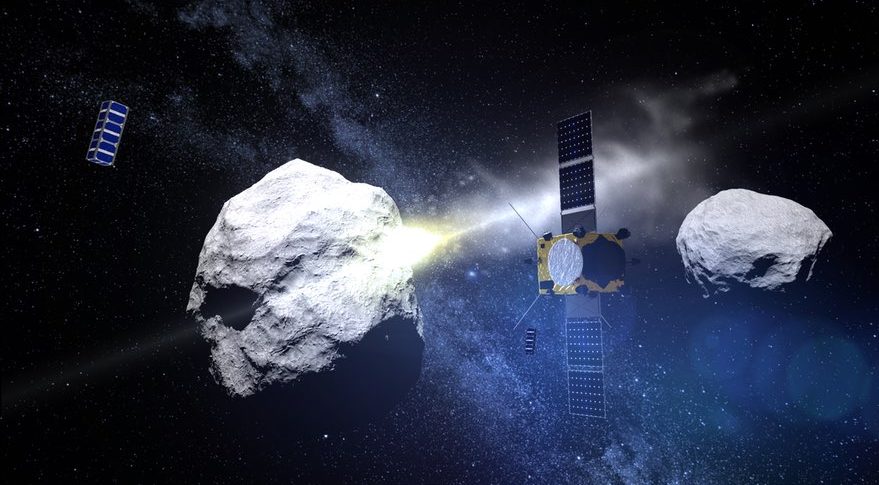Future of Asteroid Intercept Mission Depends on Congress

THE WOODLANDS, Texas — Plans to continue a NASA mission to intercept a small asteroid will depend on a decision due by the end of April on NASA's 2017 budget, an agency official said March 20.
In an interview after a town hall meeting at the Lunar and Planetary Science Conference here, Jim Green, director of NASA's planetary science division, said a decision about whether to proceed with the Double Asteroid Redirection Test (DART) mission will depend on funding by and direction from Congress.
"We're waiting for a new budget and the guidance to go forward," he said. NASA is currently operating under a continuing resolution (CR) that funds the agency at 2016 levels through April 28. Congress must then either pass a full-fledged appropriations bill for the agency or extend the CR, likely through the end of the fiscal year Sept. 30.
DART recently completed its Phase A of initial development work and is now in a "bridge" period until funding is available to begin Phase B work, project officials said during a meeting at the conference earlier the same day. Moving into Phase B "will not happen until the uncertainty in the NASA budget in '17 and '18 is resolved," said Cheryl Reed, DART project manager at Johns Hopkins University Applied Physics Laboratory, at the meeting.
DART is scheduled to launch in early 2021 and travel to the near Earth asteroid Didymos, colliding with a small moon orbiting the asteroid in late 2022. Observations of the change in the moon's orbit will allow scientists to study the effectiveness of so-called kinetic impactors that could be used to change the orbit of a potentially hazardous asteroid.
DART is NASA's contribution to an international effort known as the Asteroid Impact and Deflection Assessment (AIDA), which is also intended to include a European spacecraft, the Asteroid Impact Mission (AIM). However, at a December ministerial meeting, European Space Agency members elected not to fund AIM, putting that mission in jeopardy.
Reed said the AIM team was working to significantly reduce the size and cost of AIM by eliminating some components, like a small lander and several cubesats. "The Europeans are reconfiguring AIM so that it will be much more affordable," she said. The scaled-down AIM would still arrive ahead of DART and study Didymos and its moon prior to DART's impact, and then characterize changes in the moon's orbit after impact.
Get the Space.com Newsletter
Breaking space news, the latest updates on rocket launches, skywatching events and more!
However, she said it's possible to fly DART without AIM. "There are many different scenarios of when we could go, how we could go," she said. That includes relying on ground-based observations to measure the change in the moon's orbit after the impact, or delaying the mission two years.
It's also possible, she said, that AIM could fly after the DART mission. "In the worst case, they could go after us anytime, and still examine the impact site," she said. "We would love for them to be there pre, during and post [impact], but the most valuable piece of information for us would be actually be post."
Green, though, was skeptical that DART made sense without AIM. "It's hard to do DART without AIM," he said. "If we're going to move ahead with DART, we're also going to have to figure what the best approach is." Ground-based observations, he added, were "okay" to support DART, but were not as good as having a spacecraft like AIM present.
"In terms of a planetary defense activity, it's a great idea. Sometime we're going to have to do it," Green said of DART. "We're as far along as we can be before the budget decisions come in."
This story was provided by SpaceNews, dedicated to covering all aspects of the space industry.
Join our Space Forums to keep talking space on the latest missions, night sky and more! And if you have a news tip, correction or comment, let us know at: community@space.com.

Jeff Foust is a Senior Staff Writer at SpaceNews, a space industry news magazine and website, where he writes about space policy, commercial spaceflight and other aerospace industry topics. Jeff has a Ph.D. in planetary sciences from the Massachusetts Institute of Technology and earned a bachelor's degree in geophysics and planetary science from the California Institute of Technology. You can see Jeff's latest projects by following him on Twitter.










